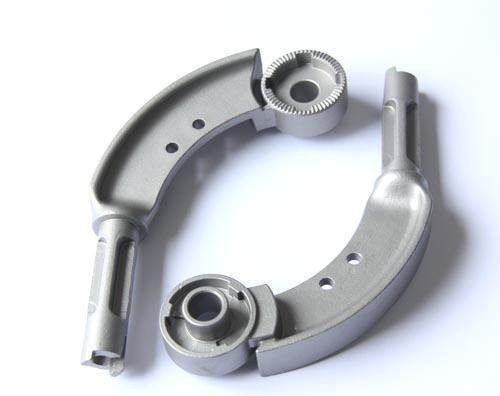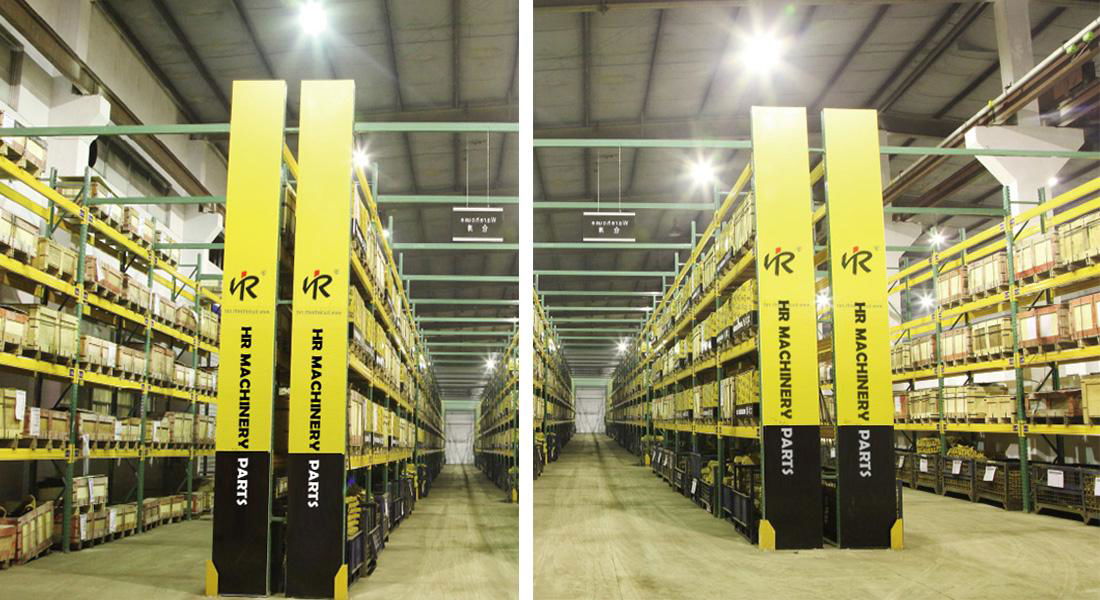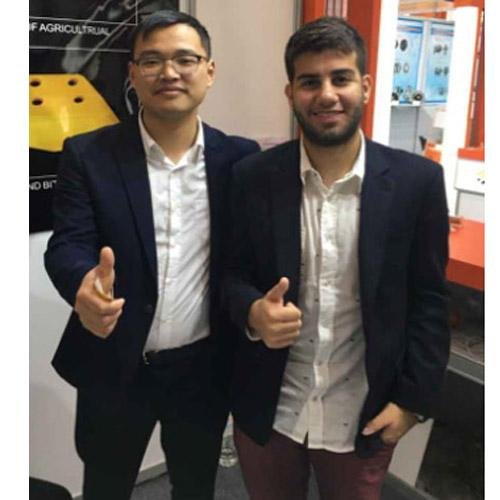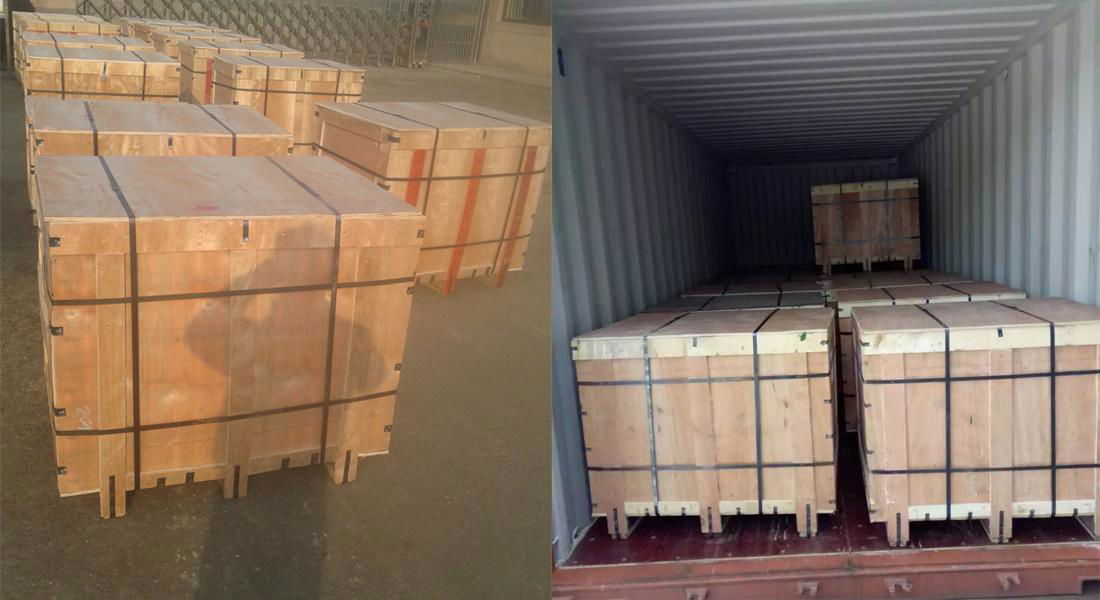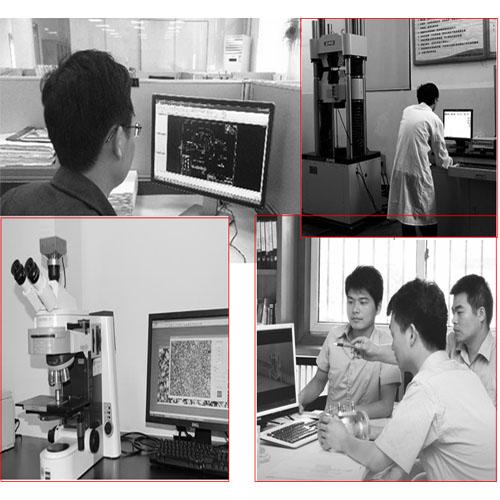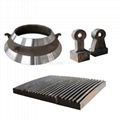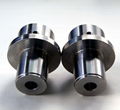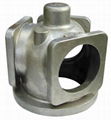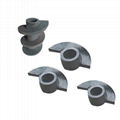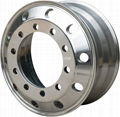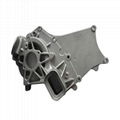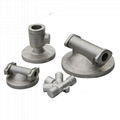| Model: | Custom made |
|---|---|
| Brand: | HR |
| Origin: | Made In China |
| Category: | Industrial Supplies / Machinery / Cast & Forged |
| Label: | stainless steel , sand casting , lost-wax casting |
| Price: |
US $7
/ kg
|
| Min. Order: | 2000 kg |
Product Description
Investment casting is also known as the lost wax process. This process is one of the oldest manufacturing processes. The Egyptians used it in the time of the Pharaohs to make gold jewelry (hence the name Investment) some 5,000 years ago. Intricate shapes can be made with high accuracy. In addition, metals that are hard to machine or fabricate are good candidates for this process. It can be used to make parts that cannot be produced by normal manufacturing techniques, such as turbine blades that have complex shapes, or airplane parts that have to withstand high temperatures. investment casting, investment cast
The mold is made by making a pattern using wax or some other material that can be melted away. This wax pattern is dipped in refractory slurry, which coats the wax pattern and forms a skin. This is dried and the process of dipping in the slurry and drying is repeated until a robust thickness is achieved. After this, the entire pattern is placed in an oven and the wax is melted away. This leads to a mold that can be filled with the molten metal. Because the mold is formed around a one-piece pattern, (which does not have to be pulled out from the mold as in a traditional sand casting process), very intricate parts and undercuts can be made. The wax pattern itself is made by duplicating using a stereo lithography or similar model-which has been fabricated using a computer solid model master. investment casting, investment castings, casting, carbon steel casting
The materials used for the slurry are a mixture of plaster of Paris, a binder and powdered silica, a refractory, for low temperature melts. For higher temperature melts, sillimanite an alumina-silicate is used as a refractory, and silica is used as a binder. Depending on the fineness of the finish desired additional coatings of sillimanite and ethyl silicate may be applied. The mold thus produced can be used directly for light castings, or be reinforced by placing it in a larger container and reinforcing it more slurry.
Just before the pour, the mold is pre-heated to about 1000 ºC (1832 ºF) to remove any residues of wax, harden the binder. The pour in the pre-heated mold also ensures that the mold will fill completely. Pouring can be done using gravity, pressure or vacuum conditions. Attention must be paid to mold permeability when using pressure, to allow the air to escape as the pour is done.
Tolerances of 0.5 % of length are routinely possible, and as low as 0.15 % is possible for small dimensions. Castings can weigh from a few grams to 35 kg (0.1 oz to 80 lb), although the normal size ranges from 200 g to about 8 kg (7 oz to 15 lb). Normal minimum wall thicknesses are about 1 mm to about 0.5 mm (0.040-0.020 in) for alloys that can be cast easily. investment castings, investment casts, stainless steel investment casting, aluminum investment casting, precision investment casting, lost wax investment casting, titanium investment casting, aerospace investment casting, ferrous investment casting, vacuum investment casting, investment die casting, brass investment casting
The types of materials that can be cast are Aluminum alloys, Bronzes, tool steels, stainless steels, Stellite, Hastelloys, and precious metals. Parts made with investment castings often do not require any further machining, because of the close tolerances that can be achieved.
Member Information
| Jinhua Hanrui machinery co.,ltd | |
|---|---|
| Country/Region: | Zhe Jiang - China |
| Business Nature: | Manufacturer |
| Phone: | 15105891418 |
| Contact: | Honourli (sales manager) |
| Last Online: | 10 Apr, 2018 |
Related Products of this Company
-
custom made parts by special casting
US $1.4
-
hi-chrome cast iron custom-made
US $1.8
-
ductile Iron made by customer
US $1.2
-
castings and CNC machining
US $2
-
silica sol investment casting parts
-
grey iron casting parts by CNC machining
US $1.4
-
steel forging parts metal forgings
-
aluminum alloy die castings
US $3
-
malleable iron offered by drawing from
US $1.2
-
forged Alloy steel casting parts
US $1.6
